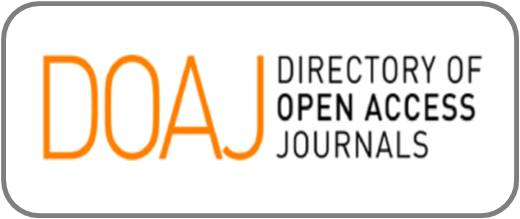The Puzzle of the Unflinching Civilians: Resilience, Resistance, or Resignation? Understanding Pakistan's National Psyche Amid Protracted Conflict
DOI:
https://doi.org/10.47540/ijqr.v5i1.2058Keywords:
Conflict, Resilience, Trauma, ViolenceAbstract
Pakistan is a battle-hardened nation, surviving decades of armed conflict, wars, terrorism, Martial laws, and internal political instability. The current paper explores the collective psychological and sociocultural responses of Pakistani civilians to prolonged exposure to conflict and violence. This study employed a thematic and comparative analysis of 46 peer-reviewed articles, media reports, and conflict studies from Pakistan and similarly affected regions, including Colombia, Afghanistan, Uganda, Syria, and Palestine. Through this lens, six themes emerged: normalization of violence, culturally embedded coping mechanisms, emotional disengagement, trauma silencing, state-media framing of conflict, and post-war identity. This study finds that Pakistan’s public resilience is less a reflection of psychological well-being and more a result of adaptive desensitization and institutional narrative control, where trauma is often reframed through patriotic, religious, or heroic perspectives. Comparative insights suggest that this resilience model happens to be uniquely reinforced by media censorship and militarized identity construction, mirroring patterns within other conflict zones. It can be concluded that Pakistan represents a hybrid trauma-resilience model: outwardly stable but fragmented inwardly; publicly stoic, privately grieving, thereby concealing the deeper layers of trauma. The study contributes to global trauma literature by challenging linear post-conflict recovery models while emphasizing context-sensitive frameworks for identity and resilience under chronic insecurity.
References
Adena, M., R. Enikolopov, M. Petrova, V. Santarosa, and E. Zhuravskaya. (2015). Radio and the Rise of the Nazis in Prewar Germany. The Quarterly Journal of Economics, 130(4), 1885-1939.
Agha, S. and M. Demeter. (2023). No difference between journalism and suicide’: Challenges for journalists covering conflict in Balochistan. Media, War & Conflict, 16(3), 344-363.
Alam, J., N. Ullah & H. Rasool. (2023). Terrorists’ Violence Threats and Coping Strategies: A Phenomenological Approach of Former FATA, Pakistan. Human Affairs 33(1): 82-100.
Albala, D. & S. Shapira. (2024). Parent‐adolescent coping with prolonged geopolitical conflict: A qualitative analysis focusing on distress and resilience. Family process, 63(3), 1502-1520.
Alexander, J. C. (2004). Toward a theory of cultural trauma. Cultural trauma and collective identity, 76(4), 620-639.
Alkaraki, S. M. S., N. B. Alias & M. Maros. (2024). Exploring the impact of social media humor related to the COVID-19 pandemic: a systematic literature review on themes, coping mechanisms, critiques, and linguistic devices. Cogent Arts & Humanities, 11(1), 2322227.
Atim, T., D. Mazurana & A. Marshak. (2018). Women survivors and their children born of wartime sexual violence in northern Uganda. Disasters, 42, S61-S78.
Azim, S. W. and M. Usman Shakir. (2023). Violent conflict and National identity among the Pakistani Pukhtuns (Pashtuns) in Swat Pakistan: A theoretical and empirical exploration. National Identities, 25(3), 265-293.
Badri, A., H. Van den Borne & R. Crutzen. (2013). Experiences and psychosocial adjustment of Darfuri female students affected by war: An exploratory study. International journal of psychology, 48(5), 944-953.
Bar-Tal, D. (2011). Intergroup conflicts and their resolution: A social psychological perspective. Psychology Press.
Barrios, M. M. and T. Miller. (2021). Voices of resilience: Colombian journalists and self-censorship in the post-conflict period. Journalism Practice, 15(10), 1423-1440.
Berinsky, A. J. (2007). Assuming the costs of war: Events, elites, and American public support for military conflict. The Journal of Politics, 69(4), 975-997.
Bhat, P. (2024). Coping with hate: Exploring Indian journalists’ responses to online harassment. Journalism Practice, 18(2), 337-355.
Bilal, M. (2024). Mob Vigilantism? Outlooks on Religious Violence, Torture, and Killings. Beyond the Law: Living Blasphemy in Pakistan: Ethnography of Mundane Violence, Faith, and Lifeworlds, Springer: 105-138.
Braun, V. and V. Clarke (2006). Using thematic analysis in psychology. Qualitative research in psychology, 3(2), 77-101.
Charles, M. (2022). Re-thinking trauma: Local journalism, peace-building and continuous traumatic stress (CTS) on the violent margins of Colombia. Media, War & Conflict, 15(2), 202-220.
Charles, M. (2022). Re-thinking trauma: local journalism, peace-building and continuous traumatic stress (CTS) on the violent margins of Colombia. Media, war and conflict 15(2): 202-220.
Ebadi, A., F. Ahmadi, M. Ghanei & A. Kazemnejad. (2009). Spirituality: A key factor in coping among Iranians chronically affected by mustard gas in the disaster of war. Nursing & health sciences, 11(4), 344-350.
Eggerman, M. & C. Panter-Brick. (2010). Suffering, hope, and entrapment: Resilience and cultural values in Afghanistan. Social science & medicine, 71(1), 71-83.
Erikson, K. (1991). Notes on trauma and community. American Imago, 48(4), 455-472.
Gadarian, S. K. (2010). The politics of threat: How terrorism news shapes foreign policy attitudes. The Journal of Politics, 72(2), 469-483.
Galtung, J. (1990). Cultural violence. Journal of Peace Research, 27(3), 291-305.
Gordon, C. and A. Arian (2001). Threat and decision making. Journal of Conflict Resolution, 45(2), 196-215.
Hermez, S. (2012). The war is going to ignite: on the anticipation of violence in Lebanon. PoLAR: political and legal anthropology review, 35(2), 327-344.
Hussain, D. & B. Bhushan. (2011). Posttraumatic stress and growth among Tibetan refugees: The mediating role of cognitive‐emotional regulation strategies. Journal of Clinical Psychology, 67(7), 720-735.
Jafree, S. R., S. M. H. Nadir, Q. K. Mahmood and S. K. Burhan (2023). The migrant Hazara Shias of Pakistan and their social determinants for PTSD, mental disorders and life satisfaction. Journal of migration and health, 7, 100166.
Jan, Q., Y. Xie, M. H. Qazi, Z. J. Choudhary and B. Ul Haq (2022). Examining the role of Pakistan’s national curriculum textbook discourses on normalising the Taliban’s violence in the USA’s Post 9/11 war on terror in South Waziristan, Pakistan. British Journal of Religious Education, 44(3), 246-255.
Javed, M. T., M. Shafiq & M. H. Ahmad. (2025). Analyzing Civil-Military Response in Pakistan’s Counter-Terrorism Efforts (2014–2016). Journal of Social Sciences Review, 5(1), 435-447.
Kerr Chiovenda, M. S. (2016). Cultural Trauma, History Making, and the Politics of Ethnic Identity among Afghan Hazaras.
Khan. (2019). COVID-19 memes. DAWN News.
Khoso, A. & T. M. Shah. (2025). Precarious peace: how honor, revenge, and governance failures perpetuate tribal conflicts in Sindh. International Review of Sociology: 1-27.
Kurze, A. (2020). Seeking new metaphors: gender identities in Tunisia and Lebanon. Arab Spring: Modernity, Identity and Change: 207-233.
Moe, L. W. & M.-M. Müller (2015). Resilience as Warfare: Interventions and the Militarization of the Social in Haiti and Somalia. Kriminologisches Journal, 47(4), 279-296.
Mueller-Hirth, N. (2023). The Role of Social Science in Conflict Situations. Handbook of Social Sciences and Global Public Health, Springer: 1-17.
Muldoon, O. T. (2013). Understanding the impact of political violence in childhood: A theoretical review using a social identity approach. Clinical psychology review, 33(8), 929-939.
Nets-Zehngut, R. & S. Elbaz. (2017). Self-censorship of narratives of political violence: Four international case studies (France-Algeria, Spain, Turkey-Armenians, Japan-Korea). Self-Censorship in Contexts of Conflict: Theory and Research, 79-117.
Nguyen‐Gillham, V., R. Giacaman, G. Naser & W. Boyce. (2008). Normalising the abnormal: Palestinian youth and the contradictions of resilience in protracted conflict. Health & social care in the community, 16(3), 291-298.
Park, A. & N. Y. Lee. (2024). Digital Scarlet Letter on Journalists: Weaponized Harassment Against Journalists in South Korea. Journalism Practice, 18(2), 319-336.
Paul, A. J. (2012). Trauma and Identity: Action as a Response to State Violence in Colombia.
Pakistan vows retaliation after India launches air strikes. (2025, May 07). Al Jazeera. https://www.aljazeera.com/news/2025/5/7/pakistan-vows-retaliation-after-india-launches-air-strikes
Ray, A. (2017). Everyday violence during armed conflict: narratives from Afghanistan. Peace and conflict: journal of peace psychology, 23(4), 363-371.
Riaz, M. (2021). Semiotics of rape in Pakistan: What’s missing in the digital illustrations? Discourse and Communication, 15(4), 433-457.
Saleem, N. (2007). US media framing of foreign countries image: An analytical perspective. Canadian Journal of Media Studies, 2(1), 130-162.
Shah, S. F. A., I. Cvetkovic, T. Ginossar, R. Ullah, D. Baber & A. Slaughter. (2024). Online Harassment, Psychological Stressors, and Occupational Dysfunction among Journalists Working in a Conflict Zone. Digital Journalism, 12(6), 735-752.
Silvestri, L. E. (2018). Memeingful memories and the art of resistance. New media & society, 20(11), 3997-4016.
Sousa, C. A. (2013). Political violence, health, and coping among Palestinian women in the West Bank. Am J Orthopsychiatry, 83(4), 505-519.
Stockmann, D. and M. E. Gallagher (2011). Remote control: How the media sustain authoritarian rule in China. Comparative political studies, 44(4), 436-467.
Szostek, J. (2017). Defence and promotion of desired state identity in Russia’s strategic narrative. Geopolitics, 22(3), 571-593.
Ungar, M. (2018). Systemic resilience. Ecology and society, 23(4).
Vigh, H. (2008). Crisis and chronicity: Anthropological perspectives on continuous conflict and decline. Ethnos, 73(1): 5-24.
Wazir, A., I. Badshah, Z. A. Shah and U. Rahim (2023). Tuu Karrai Spi: Deconstructing Aman Committees and Life in South Waziristan. Critical Asian Studies, 55(2), 193-210.
Wedeen, L. (2013). Ideology and humor in dark times: Notes from Syria. Critical inquiry, 39(4), 841-873.
Yanagizawa-Drott, D. (2014). Propaganda and conflict: Evidence from the Rwandan genocide. The Quarterly Journal of Economics, 129(4), 1947-1994.
Yontucu, H. & M. Ersoy (2025). The influence of daily traumas among Turkish Cypriot and Greek Cypriot journalists residing in a divided and conflicted environment. International Communication Gazette: 17480485241302695.
Zeb, R., B. Khattak & S. Arzeen. (2023). Strengths Amidst Adversity: Comparison of Religiosity, Resilience and Locus of Control in Army Public School Affected Individuals and General Population. Journal of Asian Development Studies, 12(3).
Published
How to Cite
Issue
Section
Copyright (c) 2025 Rida Fatima, Momal Zafar, Mamoona Rafique, Zahra Ibrahim

This work is licensed under a Creative Commons Attribution-ShareAlike 4.0 International License.

















